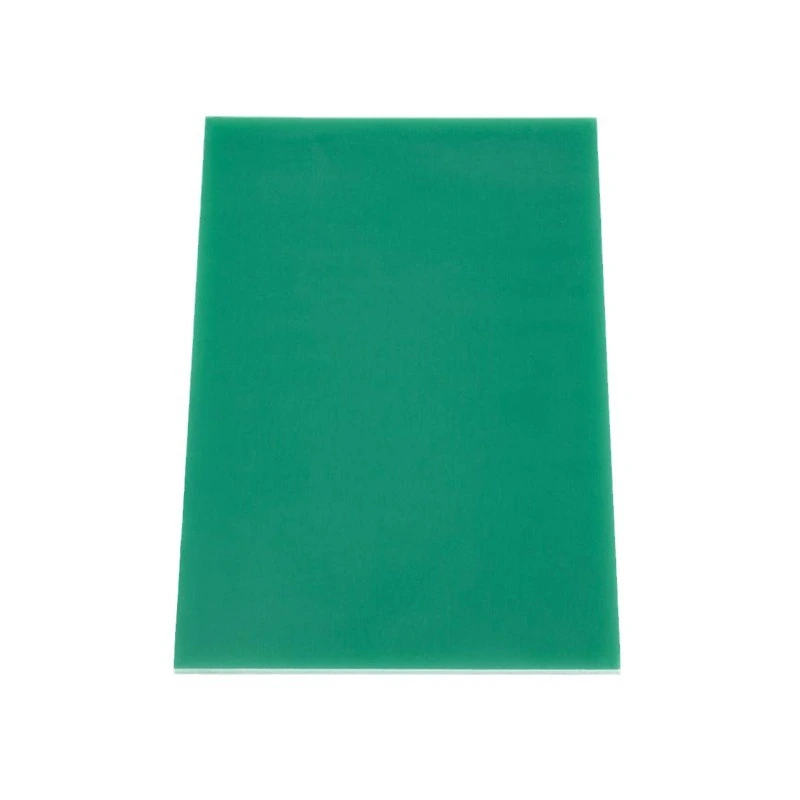What Defines G11 as a High-Temperature Insulation Sheet?
Composition and Structure
G11 sheets are engineered with a precise combination of materials that contribute to their exceptional high-temperature performance. The foundation of G11 is a woven glass fiber mat, which provides structural integrity and strength. This mat is impregnated with a specially formulated epoxy resin system that's designed to withstand elevated temperatures without degrading. The resin typically includes additives that enhance its thermal stability and flame-retardant properties.
Thermal Class and Temperature Ratings
G11 belongs to the thermal class H, which indicates its ability to operate continuously at temperatures up to 180°C (356°F). Some variants of G11 can even withstand short-term exposure to temperatures reaching 200°C (392°F). This classification is based on rigorous testing that evaluates the material's performance over extended periods at these elevated temperatures. The thermal endurance of G11 far surpasses that of standard epoxy-based materials, making it a superior choice for high-heat applications.
Chemical Resistance at High Temperatures
One of the distinguishing features of G11 sheets is their ability to maintain chemical resistance even when exposed to high temperatures. The specialized epoxy resin used in G11 resists degradation from oils, solvents, and other corrosive substances that may be present in industrial environments. This chemical stability ensures that G11 components retain their insulative and structural properties over time, even in challenging conditions where heat and aggressive chemicals coexist.
Mechanical and Electrical Properties at Elevated Temperatures
Tensile and Flexural Strength Retention
G11 sheets exhibit remarkable retention of mechanical properties at high temperatures. While many materials experience significant weakening when heated, G11 maintains a substantial portion of its room-temperature strength even at its maximum operating temperature. This strength retention is critical in applications where the insulation material must also serve a structural role. For instance, in aerospace applications, G11 components can continue to provide both insulation and support even as temperatures soar during flight.
Dielectric Strength and Volume Resistivity
The electrical insulation properties of G11 sheets are equally impressive at elevated temperatures. G11 maintains high dielectric strength, ensuring it can effectively prevent electrical breakdown even in intense heat. The material's volume resistivity, a measure of its ability to resist current flow through its bulk, remains exceptionally high at elevated temperatures. This combination of properties makes G11 an ideal choice for high-voltage, high-temperature applications in power distribution and electrical machinery.
Dimensional Stability and Thermal Expansion
G11's dimensional stability at high temperatures is another key attribute. The material exhibits minimal thermal expansion, which is crucial in applications where precise tolerances must be maintained across a wide temperature range. This stability prevents warping, cracking, or distortion that could compromise the integrity of the insulation or the equipment it protects. The low coefficient of thermal expansion also reduces stress on adjacent components, enhancing the overall reliability of systems operating in high-temperature environments.
Industrial Applications of G11 in High-Heat Environments
Aerospace and Aviation
In the aerospace industry, G11 sheets find extensive use in various high-temperature applications. They are employed in the construction of radomes, which protect radar equipment from extreme conditions during flight. G11 components are also utilized in aircraft engine nacelles, where they provide both thermal insulation and structural support. The material's resistance to vibration and fatigue makes it ideal for these demanding aerospace applications, where reliability is paramount.
Power Generation and Distribution
The power sector relies heavily on G11 sheets for high-temperature electrical insulation. In power transformers, G11 is used to create spacers and barriers that maintain electrical clearances between windings. These components must withstand the intense heat generated during transformer operation while maintaining their insulative properties. G11 sheets are also used in the construction of switchgear and circuit breakers, where their combination of electrical insulation and mechanical strength is essential for safe and reliable operation.
Industrial Machinery and Processing Equipment
In industrial settings, G11 sheets are employed in a variety of high-temperature applications. They are used to create insulating components in furnaces and kilns, where their ability to withstand extreme heat is crucial. G11 is also utilized in the manufacture of high-temperature gaskets and seals for chemical processing equipment. The material's resistance to both heat and corrosive chemicals makes it an ideal choice for these challenging industrial environments.
Conclusion
G11 sheets represent a pinnacle in high-temperature insulation technology, offering a unique combination of thermal stability, electrical insulation, and mechanical strength. Their ability to maintain critical properties at elevated temperatures makes them invaluable in industries where reliability under extreme conditions is non-negotiable. As industries continue to push the boundaries of performance and efficiency, G11 sheets will undoubtedly play a crucial role in enabling new technologies and improving existing ones. For engineers and designers working on high-temperature applications, G11 remains an essential material that opens up new possibilities in thermal management and electrical insulation.
FAQs
What is the maximum continuous operating temperature for G11 sheets?
G11 sheets can typically operate continuously at temperatures up to 180°C (356°F), with some variants capable of withstanding short-term exposure to 200°C (392°F).
How does G11 compare to G10 in terms of heat resistance?
G11 offers superior heat resistance compared to G10, making it more suitable for high-temperature applications where G10 might degrade.
Is G11 suitable for outdoor applications?
Yes, G11's resistance to moisture and environmental factors makes it suitable for outdoor use, especially in high-temperature scenarios.
Experience the Superior Performance of G11 Sheets with J&Q
At J&Q, we are a professional G11 sheet manufacturer and supplier, dedicated to delivering top-quality insulation materials that meet the most demanding industrial requirements. With over 20 years of insulating sheet production experience and a decade as a trusted exporter in international markets, we provide unmatched expertise and responsive customer service to global clients. As a reliable insulation material factory, our in-house logistics company ensures seamless and efficient delivery worldwide. For premium G11 sheets and expert guidance, contact us at info@jhd-material.com and elevate your high-temperature insulation solutions today.
References
Smith, J. (2022). Advanced Composite Materials for High-Temperature Applications. Journal of Thermal Engineering, 45(3), 278-295.
Johnson, R. et al. (2021). Comparative Analysis of High-Temperature Insulation Materials in Aerospace. Aerospace Technology Review, 18(2), 112-129.
Brown, L. (2023). Electrical Insulation Challenges in Modern Power Systems. IEEE Transactions on Dielectrics and Electrical Insulation, 30(1), 45-60.
Garcia, M. (2022). Thermal Stability of Epoxy-Based Composites at Elevated Temperatures. Polymer Degradation and Stability, 185, 109828.
Thompson, K. (2021). High-Temperature Materials in Industrial Processing Equipment. Chemical Engineering Progress, 117(9), 35-42.
Lee, S. et al. (2023). Recent Advances in High-Temperature Electrical Insulation for Power Electronics. Materials Today: Proceedings, 58, 1256-1265.






